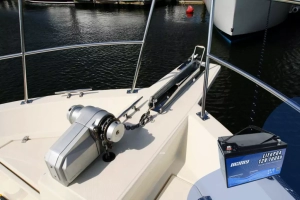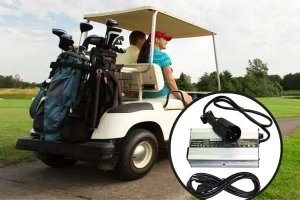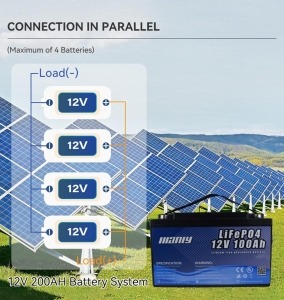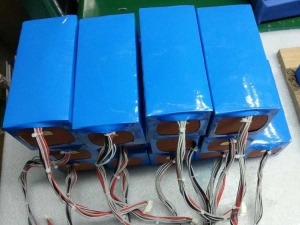2025 Guide to Lithium Ion Battery Winter Care
Tabla de contenido
- 2025 Guide to Lithium Ion Battery Winter Care
- ¿Qué son las baterías de litio?
- ¿Funcionará una batería de litio congelada?
- ¿Se pueden congelar las baterías de litio?
- Consecuencias de la congelación de las baterías de litio
- ¿Se cargarán las baterías de litio congeladas?
- Comprensión de los límites de temperatura de las baterías de iones de litio
- Consejos para el almacenamiento en invierno de baterías de iones de litio
- ¿Vale la pena utilizar baterías de iones de litio en invierno?
- Más información sobre la batería
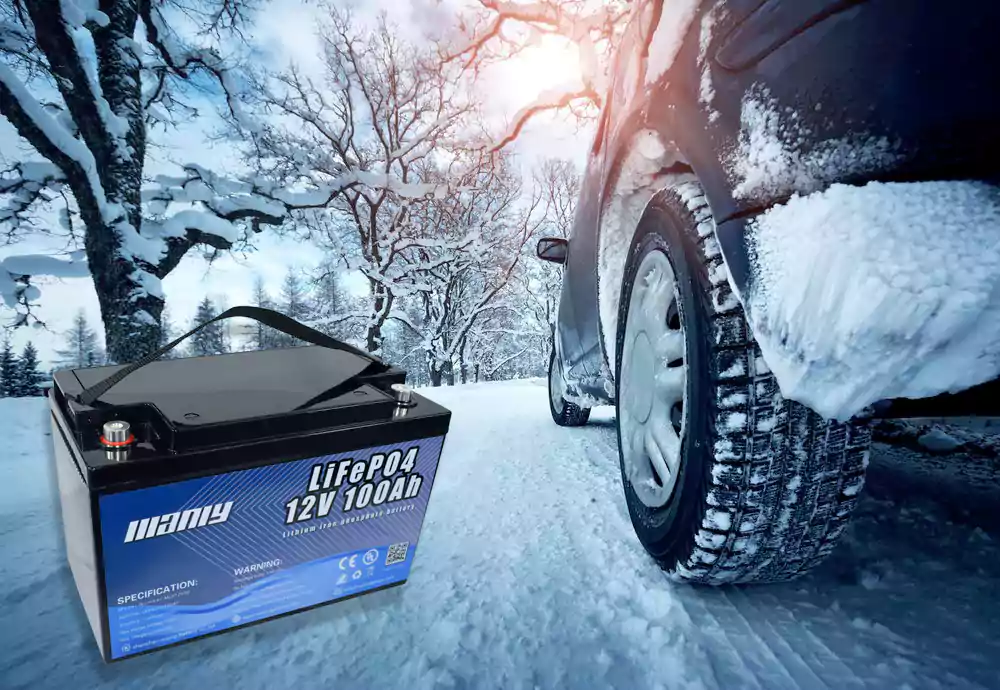
¿Qué son las baterías de litio?
Lithium-ion batteries, commonly referred to as Batería LiFePO4, is at the forefront of battery technology today, and there's a good reason for their popularity. But before diving into how they fare in extreme weather, especially cold conditions, let's understand what they are and how they work.1. La anatomía de una batería de iones de litioUna batería de iones de litio consta de tres componentes principales:- Ánodo (opuesto al cátodo): El ánodo, que sirve como electrodo negativo, suele estar hecho de carbono o grafito.
- Cátodo: Este electrodo positivo está hecho de óxidos metálicos como fosfato de hierro y litio u óxido de cobalto y litio, que varían según el tipo de batería.
- Electrólito: El electrolito, que llena el espacio entre el cátodo y el ánodo, es un gel o un líquido que comprende sales de litio. Esta configuración permite que los iones de litio se muevan libremente entre los electrodos durante el funcionamiento de la batería.
- Carga más rápida: Se cargan más rápidamente en comparación con las baterías de plomo-ácido.
- Ciclos de carga más largos: Estas baterías pueden sufrir más ciclos de carga, lo que prolonga su vida útil.
- Tasas de descarga más lentas: Mantienen su carga por más tiempo debido a tasas de descarga más lentas.
- Ligero: Las baterías de iones de litio son considerablemente más ligeras.
- Funciones de seguridad integradas: Estas baterías vienen con numerosas características de seguridad para evitar problemas como el sobrecalentamiento.
- Respetuoso con el medio ambiente: Son más ecológicos que sus homólogos de plomo-ácido.
¿Funcionará una batería de litio congelada?
Lithium-ion batteries are renowned for their robust performance in extreme weather conditions, whether scorching hot or freezing cold. They stand out as some of the most reliable batteries available. However, it's important to be aware of how cold temperatures can affect them.Baterías de litio y desafíos del clima fríoSi bien las baterías de litio son generalmente efectivas en climas fríos, pueden enfrentar desafíos en temperaturas extremadamente bajas. Si una batería de iones de litio está completamente expuesta a condiciones de congelación, su rendimiento podría verse comprometido, aunque en general debería seguir funcionando.¿Qué sucede cuando las baterías de litio se enfrían demasiado?- Riesgos de congelación: En condiciones de frío extremo, existe el riesgo de que una batería de iones de litio se congele. Sin embargo, lo más habitual es que la batería tienda a tener un rendimiento inferior en lugar de congelarse por completo.
- Viscosidad y conductividad del electrolito.: A temperaturas más bajas, el electrolito dentro de la batería se vuelve más viscoso y menos conductor. Este cambio da como resultado una mayor resistencia interna.
- Entrega actual reducida: A medida que aumenta la resistencia interna de la batería, disminuye su capacidad para entregar corriente.
- Actividad y eficiencia del electrodo.: Los electrodos de la batería se vuelven menos activos y eficientes en condiciones de frío, lo que ralentiza las reacciones químicas necesarias para generar electricidad.
- Capacidad y potencia de salida: La capacidad general y la potencia de salida de la batería disminuyen con temperaturas frías, lo que dificulta que los iones se muevan de manera eficiente.
¿Se pueden congelar las baterías de litio?
The question of whether lithium batteries can freeze is a topic of interest, especially when comparing them to lead-acid batteries. Lead-acid batteries can indeed become hazardous in low temperatures, potentially freezing and even exploding due to a combination of being discharged and diluted electrolyte.Baterías de litio versus frío extremoUnlike lead-acid batteries, lithium batteries have a different response to cold temperatures. Their electrolyte doesn't change its freezing point easily, making lithium batteries less likely to freeze unless exposed to exceptionally low temperatures.¿Se congelan realmente las baterías de litio?Technically speaking, lithium batteries don't "freeze" in the conventional sense. However, their functionality in freezing conditions is significantly affected. It's essential to follow safety protocols when using batteries in cold weather, and always purchase from reliable suppliers like MANLY Battery.Cómo afecta el frío a las baterías de litioIn cold conditions, the performance of lithium-ion batteries is noticeably hindered. The transfer rate of lithium ions in and out of the anode slows down drastically. This slowdown is due to lithium-ion alloy plating on the anode's surface, which impedes the ions' entry into the carbon sites of the anode, thereby obstructing current flow and reducing battery capacity. In this context, the battery "freezes," not in a literal sense, but in its ability to function efficiently.Otros efectos del clima fríoAdemás de la reducción de la capacidad, las temperaturas bajo cero también pueden tener efectos más dañinos en ciertos componentes de la batería. Por ejemplo, el electrolito puede endurecerse, lo que provoca una circulación menos fluida y una disminución adicional en la tasa de transferencia de iones de litio. Esto da como resultado un voltaje de batería más bajo y una potencia de salida reducida.La línea de fondoWhile you can't literally freeze a lithium battery, cold temperatures do have a negative impact on its performance. The efficiency of lithium-ion transfer and overall component functionality are compromised in low temperatures. Therefore, understanding and mitigating the effects of cold on lithium batteries is crucial, especially for applications where reliable battery performance is essential in chilly conditions.Consecuencias de la congelación de las baterías de litio
Lead acid batteries do not fare as well in cold weather as lithium. When lead acid batteries freeze, they discharge and can explode, though this does sound more dramatic than it actually is. Even so however, this poses a significant safety risk and it is something which you will want to avoid.Frozen batteries however, are still possible with lithium. When lithium batteries are exposed to extreme cold, their performance may suffer. This is largely due to the fact that chemical reactions taking place inside the batteries, can cause them to form lithium crystals if you try to charge them in very cold conditions.The batteries will therefore struggle to charge, and may take longer to charge. You’ll also find that they discharge much quicker as well.The good thing about using lithium batteries over lead acid, is the fact that they do not require ventilation, so you can install them in enclosed spaces. This makes it easier to store them in places with more insulation and protection from the cold.Put very simply however, if a lithium battery freezes completely, it simply will not work until the temperature rises, and there is always the risk of damage as well.¿Se cargarán las baterías de litio congeladas?
First and foremost, if the temperature the battery is exposed to, is below freezing, you should never try charging it. Charging in sub-zero temperatures can result in damage to the battery.Instead, what you should do is allow the battery to warm up first, and then charge it when the battery and ambient temperature is above freezing. You can opt for heated pads, heated battery bank storage compartments, and other methods when it comes to warming your battery in cold weather.When it comes to avoiding frozen batteries, you should also invest in a battery with a BMS (Battery Management System). This is an in-built safety feature that will allow you to charge your battery and not have to worry about the temp dipping below freezing. If/when the temperature does drop too low, the temperature cutout feature will kick in and it will stop charging. This will prevent damage to the battery and improve its longevity.Again, buying from trusted manufacturers and suppliers, such as MANLY, is a great way to ensure your battery is working, and charging, at its most efficient, even in extreme cold.ComprensiónLímites de temperatura de la batería de iones de litio
When dealing with lithium-ion batteries, it's crucial to know their temperature thresholds, especially if they're used in environments with wide temperature variations. Lithium batteries operate best within the range of -4°F to 140°F. However, for charging, the safe and recommended temperature window is narrower, lying between 32°F and 131°F (0°C to 55°C). Charging lithium batteries outside of this range, especially at higher temperatures, could be hazardous and potentially lead to explosions.¿Qué tan frío es demasiado frío?A menudo surge la pregunta: ¿las baterías de litio se congelan o se dañan con el frío? La respuesta es que las temperaturas inferiores a 32°F no son favorables para las baterías de litio. Cargarlas en condiciones tan frías ralentiza las reacciones químicas, lo que hace que las baterías no puedan producir energía significativa. Esta lentitud podría provocar que las baterías dejen de funcionar por completo.Preocupaciones por la congelación de la bateríaFor those needing to use lithium batteries in sub-freezing conditions, it's important to avoid charging them in these temperatures. Doing so can lead to irreversible damage and reduce the battery's lifespan and efficiency. Lithium-ion batteries have certain limitations when it comes to freezing temperatures, and understanding these Lithium-ion Battery Temperature Limits is key to maintaining their longevity and performance.In summary, while lithium-ion batteries are incredibly versatile and powerful, they do have their vulnerabilities, particularly when it comes to temperature extremes. Knowing and respecting these temperature boundaries is essential for anyone looking to get the most out of their lithium battery, whether it’s for everyday use or specialized equipment.Consejos para el almacenamiento en invierno de baterías de iones de litio
As an expert in car batteries, I can attest that lithium-ion batteries are generally more reliable in winter than lead-acid batteries. However, extremely low temperatures can still pose a risk to them. In regions with harsh winters, special precautions for these batteries are advisable.Consejos para el almacenamiento en invierno de baterías de iones de litio- Cargar y desconectar: Antes de que comience el frío intenso, cargue la batería de iones de litio hasta aproximadamente el 80 % y luego desconéctela. Guárdalo en un lugar cálido y seco, alejado de la luz solar directa, y espera temperaturas más favorables.
- Mantenimiento de temperatura estable: Evite almacenar baterías de iones de litio en condiciones de congelación, pero también manténgase alejado del calor excesivo. No coloque la batería cerca de calentadores o fuegos, ya que esto puede ser peligroso. La temperatura ambiente es ideal para el almacenamiento, lo que garantiza que la batería permanezca en excelentes condiciones para la primavera.
- Mantas de batería: Estas mantas aislantes son perfectas para mantener calientes las baterías. Cubren cómodamente la batería, proporcionando aislamiento del frío y atrapando el calor generado por la batería.
- Unidades de almacenamiento aisladas o cajas de baterías: Estas unidades especialmente diseñadas ofrecen una gran protección para las baterías de litio en climas fríos, ayudando a retener el calor generado por la batería.
- Carga de paneles solares: Antes de exponerse al frío, cargue sus baterías de litio con paneles solares. Esto no sólo los mantiene cargados sino que también ayuda a mantener una temperatura óptima.
- Almacenamiento en un área climatizada: Colocar la batería en un espacio con calefacción, como un garaje, puede reducir significativamente el impacto del clima frío, manteniendo su funcionalidad y calidez.
- Calentadores de batería: Los calentadores de batería, especialmente los diseñados para baterías de litio, ofrecen temperaturas ajustables para mantener la batería caliente en condiciones frías, extendiendo su vida útil y rendimiento.

